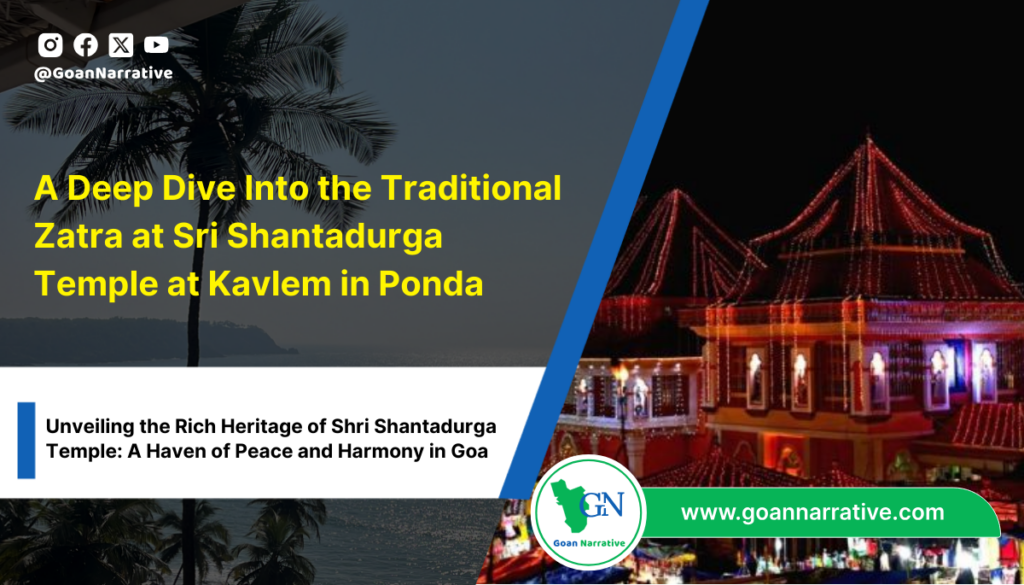The Shri Shantadurga Temple is situated at the base of Kavlem village in Ponda Taluka.According to mythology, the deity is recognized as Goddess Sri Jagadamba, who played a crucial role as a mediator between the warring Lord Shiva and Lord Vishnu.
She physically intervened, separating the two and restoring peace, known as ‘shanta-ta.’ This narrative is vividly portrayed in the idol, depicting her holding Vishnu on one side and Shiva on the other. Acknowledged as ‘Shanta-Durga’ or the ‘tranquil version of Durga,’ she earned this title for her role in bringing about reconciliation and harmony between the conflicting gods.
Interestingly, when the site for relocating the newly shifted deity in Kavale was chosen, it was discovered that the area was occupied by a Harijan settlement (a lower caste community). Despite this, upon learning about the devotees’ wish to install the idol there, the community willingly vacated the lands.
This compassionate gesture has not gone unnoticed, and for the past four centuries, this community has been formally invited and welcomed into the temple ‘with honor’ every year on the second day of the temple festival, Magh Shudh Shastami. During this ceremony, they are felicitated with coconuts, blouse pieces (referred to as ‘khaan’), sarees, and more
The current idol we observe today is not the original one; it was stolen by Muslim raiders (Pathans) in the year 1898 AD. The present-day four-armed, five-metal alloy (Panchadhatu) idol was crafted in 1901 AD by Laxman Krishnaji Gaitonde from Karkal, Karnataka. It was subsequently installed on March 19, 1902. Additionally, just below and in proximity to this idol, there is a small Shiva-ling made of black stone.
The annual ‘jatra’ or temple festival is a grand celebration commencing from the first day of the bright half (Shudh Pratipada) in the month of ‘Magh’ and concluding on the sixth day ‘Magh Shudh Shasshti’. It is mandatory for at least one member of each Keloshikar (original members of Keloshi) to attend this ‘jatra’, along with other Mahajans.
If a devotee arrives on the fifth day (Panchami), they are required to remain within the precinct until all ‘jatra’ rituals are completed, unless permitted otherwise by the deity. Seeking leave involves placing a coconut and seeking permission.
On the concluding day, the magnificent temple ‘rath,’ adorned with vibrant pennants, is set into motion on colossal wooden wheels and drawn around the temple, housing the deity. The procession commences only after the ‘swami’ or his representative breaks a coconut on the chariot’s wheel, followed by others in sequence.
For those seeking the grandeur of a Goan temple ‘Jatra,’ the annual celebration of Sri Shantadurga Temple at Kavlem in Ponda is a must-attend. Additionally, don’t miss the opportunity to purchase ‘Khaje,’ the traditional ‘Jatra’ sweet, recently awarded the GI Tag. The visit promises to captivate with its architectural splendor.
